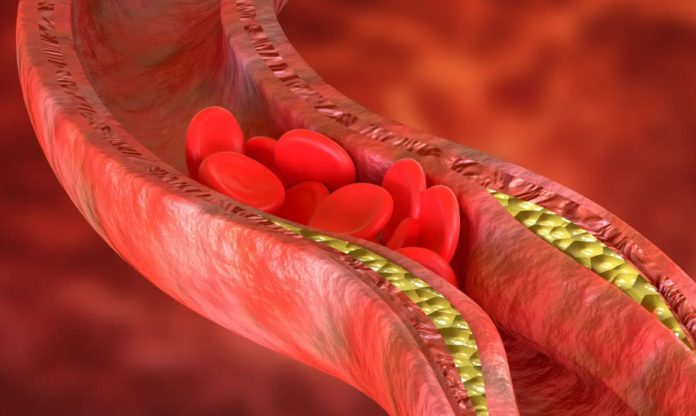Until recently, atherosclerosis was assumed to be solely a blood vessel disease. In reality, vascular injury causes nerve connections to form in the brain.
Atherosclerosis is responsible for about every second fatality in Western industrialized countries. The inflammatory plaques that form as a result constrict the vessels, resulting in heart attacks or strokes. Because the plaques and neurons are physically separated by the blood vessel wall, it was previously thought that the nervous system was not involved in the development of atherosclerosis. The new study contradicts that.
For the first time, an international team led by University of Manchester researchers has proved that nerve signals are exchanged between obstructed arteries and the brain.
The finding of the previously unknown electrical circuit advances our knowledge of atherosclerosis, a potentially fatal disease in which plaques grow on the innermost layer of arteries.
The mouse study discovered that new nerve bundles emerge on the outer layer of the artery where it is sick, allowing the brain to identify and interact with the damage.
The team’s preliminary findings indicate that this also occurs in human arteries.
The discovery, which was published in Nature, could lead to novel treatments for the causes of the condition, in which deposits gradually block the lumen of arteries, resulting in heart attacks, strokes, and other complications.
According to the researchers, nerves transmit signals from plaque-filled arteries to the brain.
The information returns to the afflicted blood vessel once the brain has processed the signals.
“In recent decades, nobody has asked whether there is a direct connection between the artery and the brain – the obvious reason being that atherosclerotic plaques are not supplied by nerves,” explains lead researcher Dr. Sarajo K. Mohanta.
“But atherosclerosis is more than just a plaque; rather it is a chronic inflammatory disease of the entire artery. Our findings relating to its outer layer are very relevant.”
“In the long term, we hope to be finally able to treat the causes of atherosclerosis although that may well be some way off yet.”
The researchers traced the neurological circuit by infecting neurons with a virus whose antibody produces a fluorescent track as it travels up from damaged arteries to the brain.
They were then able to follow the trace, which allowed them to compare healthy mice to ill animals and identify the electrical connections immediately.
Atherosclerosis was less advanced in experimentally-treated animals than in control animals.
“Today we have the tools not only to visualise, but also to turn on or off nerve bundles connecting the brain with the body with unprecedented selectivity. This gives us a greater understanding of how the brain and other parts of the body are wired together during health and disease,” added Dr. D’Agostino.
“The novel technologies we have been using make it possible to reduce the boundaries between disciplines that were previously working in isolation. And that, in the long term, could have a significant impact on the development of novel therapeutics and ultimately improve human health .”
Arteries have three layers, although only the innermost layer contains plaques.
Scientists have long recognized that nerve fibres do not penetrate the deepest layers. “s such, no one has asked whether nerves come into contact with arteries in the case of atherosclerosis so this could open up a new understanding of atherosclerosis,” explains senior author Professor Andreas Habenicht of the University of Munich.
However, the researchers discovered that receptors, which are molecular sensors found on the outer layer of the vessels, play an important role.
By recognizing the inflammatory messengers of inflammation, the receptors can determine where plaques are present and where vessels are inflamed.
The inflammatory signals are then translated into electrical signals by receptors at nerve endings, which are sent to the brain via nerves.
The impulses are processed by the brain, which then sends a stress signal to the inflamed blood artery. This has a deleterious impact on inflammation, and atherosclerosis worsens.
Professor Daniela Carnevale and Giuseppe Lembo of the University of Rome and the Neuromed Institute in Italy investigated mice with disrupted electrical connections between a sick artery and the brain.
Atherosclerosis was less established in the experimental therapy mice than in the control mice.
Image Credit: Getty
You were reading: Atherosclerosis: Vascular damage has a direct link to the brain
